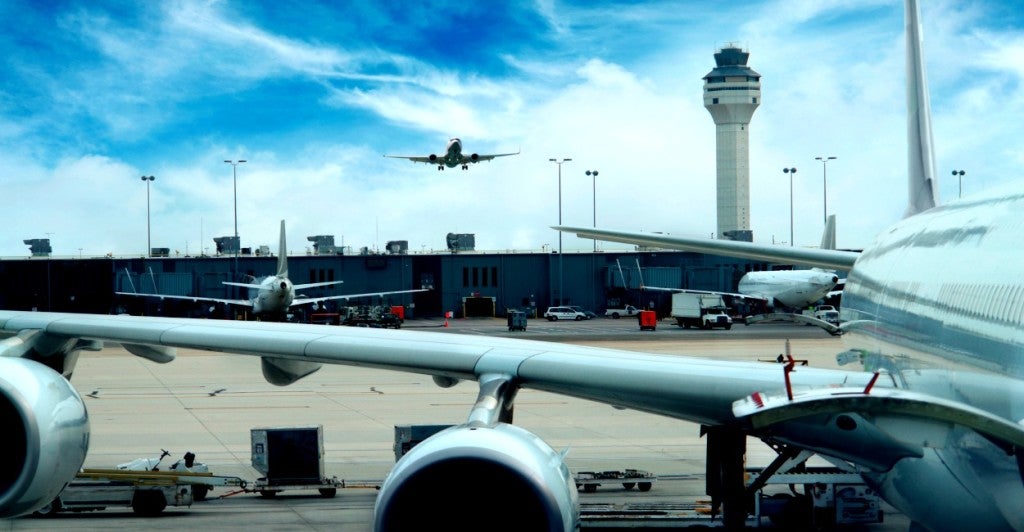The Aviation Innovation Reform and Reauthorization Act contains several reforms that move in the right direction. Notably, it removes America’s air traffic control system from the Federal Aviation Administration and establishes it as a federally chartered, nonprofit corporation.
But the legislation includes troubling labor provisions. Its supporters seem intent on buying government union support by giving them even more leverage over the public than they now possess.
This sets a terrible precedent for future privatization efforts. Congress should modernize America’s air traffic control system without enriching unions.
The air traffic control system is unquestionably outdated. The government still uses 1960s technology to track planes in the air. Other countries, such as Canada, have solved this problem by privatizing their air traffic control systems.
These private entities have rapidly switched to more reliable modern technologies that reduce the risk of collision. It is promising that members of Congress have acknowledged the benefits of privatizing air traffic control and have proposed to remove it from federal control, as Canada has.
However, the Aviation Innovation Reform and Reauthorization Act (AIRR) does not address one of the problems impeding reform: the National Association of Air Traffic Controllers, the union representing air-traffic controllers. The union has used its leverage to negotiate gold-plated and diamond-studded compensation packages for its members.
The Bureau of Labor Statistics reports the median air traffic controller makes $123,000 a year in cash wages. Including noncash benefits brings the average total compensation package to approximately $200,000 a year—vastly more than most private-sector workers in jobs requiring an associate’s degree.
The public pays for these inflated compensation packages through higher taxes on airline passengers. The National Association of Air Traffic Controllers redistributes wealth from taxpayers and the flying public—most of whom make much less than $200,000 a year – to the union’s members.
The “reform” measure does nothing to stop this. Worse, it includes several provisions that strengthen the union’s hand:
- Binding Arbitration. Under current law, the FAA can impose a contract if negotiations with the union hit an impasse. The Bush administration did this in 2006, limiting average air traffic control compensation to “just” $187,000 a year. (The Obama administration reversed that decision when it took office, giving the unions the package worth $200,000 a year). One section (§90707) of the legislation requires the new corporation to go to binding arbitration instead of imposing a contract. Binding arbitration tends to produce union-friendly awards. This provision means the new entity will have even less power than the FAA does now to restrict the growth of air traffic controllers’ compensation.
- No Federal Salary Cap. The new, nonprofit corporation will not be subject to the federal salary cap (currently $185,100 in cash wages or salaries for most federal employees). This will allow the union to negotiate–or get an arbitrator to impose–even larger pay increases than they can legally ask for now.
- Government Benefits. Another section of the legislation (§90705) lets the union’s current members keep their federal pensions and health benefits, or get benefits from the new agency. So they will keep their government benefits, unless the union negotiates even better benefits at the new entity. In that case, they can switch to the higher compensation package. Airline passengers whose fees cover these costs get the worst of both worlds.
- Reduced Strike Penalties. Some conservative critics of AIRR have claimed it would allow air traffic controllers to strike. This is incorrect. Under the legislation, a strike would remain an illegal unfair labor practice. The new agency could go to court to request an injunction to end one, and the union could get decertified if it calls a strike. However, government unions will engage in illegal strikes when they think they have the leverage to extract concessions (as the recent Detroit public schools “sickouts” demonstrate). The question is what penalties strikers face. Under current law, the president can fire striking federal employees and bring in replacements—as President Ronald Reagan famously did to end the 1981 air traffic controllers strike. Moving the air traffic controllers to a quasi-private corporation would mean the president could no longer intervene to end a strike by firing the strikers.
Congress could easily fix these problems. Leaving the current dispute reconciliation system in place—instead of shifting to arbitration—would eliminate most of the labor concerns. The rest would be solved by expressly authorizing the new corporation to fire illegally striking workers—as the federal government can do now.
These changes would enable the new agency to keep labor costs in line. But the Aviation Innovation Reform and Reauthorization Act does not take these steps, and instead increases the union’s leverage. Why?
Probably because AIRR supporters want the National Association of Air Traffic Controllers to support the reforms. They appear to have bought this support by offering the union even more power at the quasi-private agency.
Unsurprisingly, the union has endorsed the legislation. But this legislative payoff sets a terrible precedent for future privatization efforts. A non-trivial portion of the financial benefits of privatization come from eliminating the monopoly power of government unions. AIRR instead strengthens that monopoly power. This would set an expectation that future federal privatization efforts would similarly benefit unions.
Privatizing the air traffic control system is long overdue. But Congress should not strengthen the union’s power over the flying public in the process.
